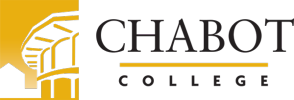Bacteria, fungi, protozoa, helminths, and viruses, with an emphasis on their relationships to humans and disease. Microbial growth and control, microbial metabolism, and microbial genetics. Microbe-host interactions, including the beneficial microflora and the pathogenesis of contemporary infectious diseases. Methods used in the laboratory, including cultivation, staining, isolation, quantification, identification, and antibiotic sensitivity testing of microbes. Intended for students planning to enter training programs leading to allied health professions, such as registered nurse and dental hygienist. May not receive credit if MICR 1 has been completed successfully.
Course Details:- Prerequisite: BIOS 41
or- Prerequisite: BIOL 31
or- Prerequisite: BIOS 21C
or- Prerequisite: BIOL 2
or- Prerequisite: BIOS 21B
or- Prerequisite: BIOL 4
and- Prerequisite: CHEM 30A
or- Prerequisite: CHEM 1A
- Strongly Recommended: BIOS 42
or- Strongly Recommended: ANAT 1
and- Strongly Recommended: ENGL 1
